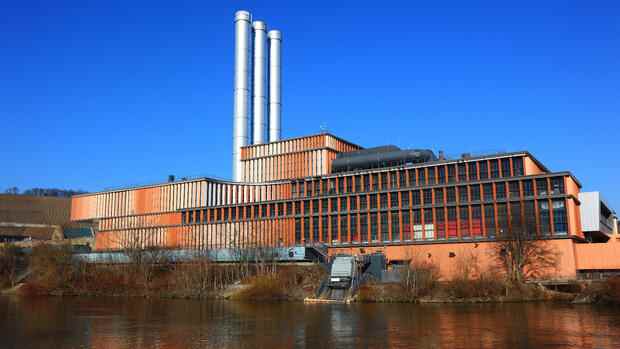Krebber and Habeck announced on Tuesday that RWE would shut down its lignite-fired power plants in 2030, eight years earlier than previously agreed. At the same time, with a view to 2030, new gas-fired power plants are to be put out to tender in order to then have reliable electricity producers on the grid again. RWE will take part in tenders for new gas-fired power plants with a capacity of up to three gigawatts. However, this is only a fraction of the required power plant capacities.
The ministry also announced that it would “enable the construction of flexible power plants that can initially be operated with natural gas, but by 2030 with at least 50 percent and by 2035 at the latest with 100 percent hydrogen”. The necessary framework will be created for this.
This means that the new gas-fired power plants, which make the phase-out of coal possible in the first place, are once again the focus of the energy policy debate. In the future, they will be the guarantors that even when the wind isn’t blowing and the sun isn’t shining, there will be sufficient secure power for the power supply system. With a growing share of renewable energies, the utilization of gas-fired power plants will decrease continuously. This plan makes it difficult for operators to make money from the power plants.
Top jobs of the day
Find the best jobs now and
be notified by email.
It is not yet clear how the incentives for the construction of new gas-fired power plants will be structured. The Federal Ministry of Economics has commissioned the Expert Commission for Monitoring the Energy Transition to develop recommendations.
How much does the state have to intervene?
Economist Veronika Grimm, who is a member of the commission, warns against relying too heavily on government intervention. Rather, it is about “further developing the electricity market in a market-oriented manner,” she said. “The greater the regulatory uncertainty about a return to ‘more state’ in the medium term, the less private sector investment will be made,” warned Grimm. According to Grimm’s prognosis, it would not be cheaper if organized by the state, only very likely much more slowly and inefficiently.
>> Read also: The “new climate policy” has not been thought through economically
David Bothe from Frontier Economics, a consulting firm specializing in energy-related issues, calls for the phase-out of coal to be linked to the mandatory construction of new gas-fired power plants: “In the past, we were always very precise when it came to setting shutdown and phase-out dates. When it came to replacements, on the other hand, it was always quite vague.”
Bothe doubts that the market alone provides sufficient incentives for the construction of gas-fired power plants: “We have had a whole series of market interventions in recent years. Anyone who now builds and maintains gas-fired power plants will hardly ever trust pure market forces. Therefore, additional incentives will be required.” The provision of secured power plant capacity is of fundamental importance. “This issue must be regulated clearly and quickly,” said Bothe.
Kerstin Andreae, General Manager of the Federal Association of Energy and Water Management (BDEW), urges haste. “Investments in hydrogen-capable gas power plants are energy transition investments. So that they can be implemented in the short term and the criteria set by the EU taxonomy can be met, the Federal Government must decide and implement a whole bundle of measures in a timely manner.”
This includes Andreae, for example, an adjustment of the law on combined heat and power (CHP). The surcharges specified therein should enable the economic operation of new CHP systems with green hydrogen. In addition, the innovation program for hydrogen-capable gas power plants laid down in the coalition agreement must be presented quickly.
The number of power plants required is still unclear
From the point of view of the Association of Municipal Companies (VKU), in which the municipal utilities are combined, the energy industry “needs a market design for the time horizon up to 2030 that enables new power and heating plants to be operated economically despite shorter operating times”. VKU General Manager Ingbert Liebing also insists on completing the evaluation of the CHP Act quickly, “also to push the hydrogen update for our CHP systems and thus the municipal heating networks”.
>> Read also: Energy suppliers fear an “economic meltdown” – this is what their solution would look like
Experts still do not agree on how many additional gas-fired power plants will have to be built if coal is phased out earlier. In a study, the Federation of German Industries (BDI) and the Boston Consulting Group (BCG) came to the conclusion that a “net increase in the construction of 43 gigawatts (GW) of gas-fired power plants by 2030 is required in Germany to ensure security of supply while at the same time complying with the emissions budget”. be.
The BDI admits that this is an “extension on an unprecedented scale”. To illustrate: The required expansion of gas-fired power plants roughly corresponds to the installed capacity of 43 nuclear power plants or 43 large coal-fired power plant blocks. In other studies, the value of the required gas power plants is set significantly lower. For example, the German Energy Agency considers an additional 15 gigawatts to be sufficient by 2030. In view of the lack of investment incentives, however, even this value will be difficult to achieve.
More: Cold withdrawal of Russian gas – Germany is threatened with an emergency winter.
